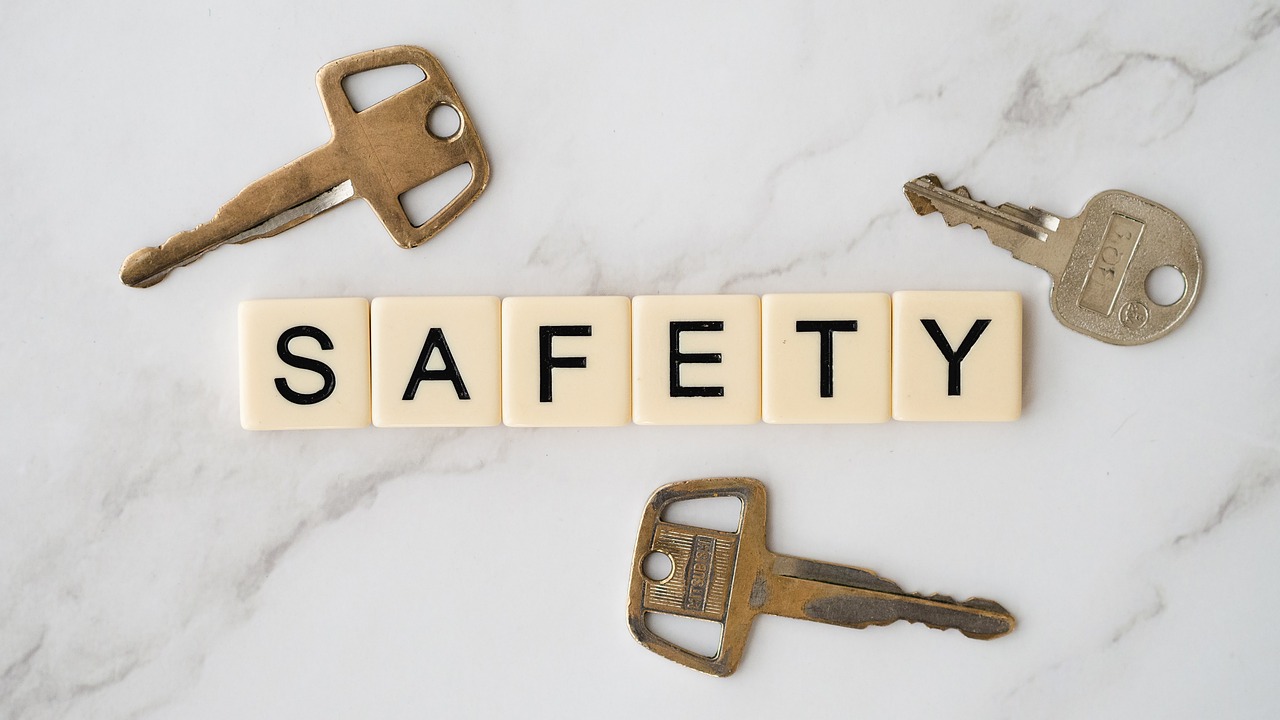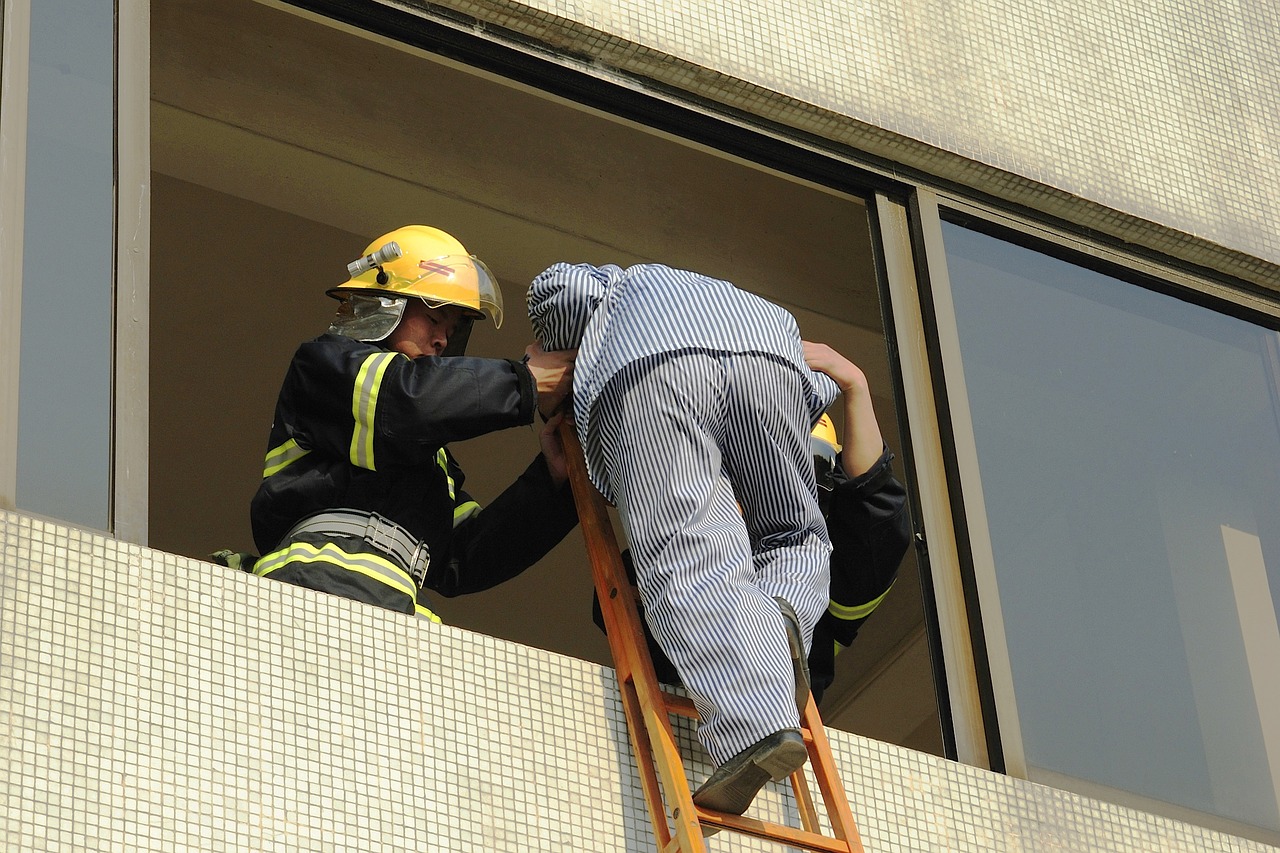Making your Workplace Safer: Understand the Impact of Human Behavior
In today's fast-paced work environment, the importance of safety cannot be overstated. It's not just about having the right equipment or following protocols; it’s about how human behavior plays a pivotal role in creating a safe workplace. Have you ever wondered why some accidents happen despite all the safety measures in place? The answer often lies in the choices and actions of individuals. Understanding this connection can help organizations develop strategies to enhance safety and reduce incidents.
When we talk about workplace safety, we often focus on policies, procedures, and equipment. However, the human element is just as critical. Every day, employees make decisions that can either enhance safety or put themselves and others at risk. For instance, a worker might choose to skip wearing personal protective equipment (PPE) because they feel it’s unnecessary for the task at hand. This decision, while seemingly minor, can lead to serious consequences. By understanding how individual actions impact safety protocols, organizations can take proactive steps to foster a culture of safety.
Identifying common behavioral risks is essential for any organization aiming to improve safety. Many workplace accidents stem from predictable behaviors that can be addressed through awareness and training. Here are some frequent unsafe behaviors:
- Ignoring safety protocols
- Rushing through tasks
- Failing to report hazards
- Using equipment improperly
These behaviors often arise from a lack of awareness or understanding of the risks involved. By shining a light on these issues, organizations can better prepare their workforce to make safer choices.
Negligence and complacency are like two sides of the same coin when it comes to workplace safety. Negligence often stems from a failure to recognize the importance of safety measures, while complacency can develop when employees become too comfortable in their routines. Both attitudes can lead to dangerous situations. For example, an employee who has worked in the same role for years may start to overlook safety protocols, believing they are invulnerable to accidents. This mindset can be detrimental, as it breeds an environment where risks are underestimated.
Several factors contribute to negligence in the workplace, including:
- Lack of Training: Employees who are not adequately trained are less likely to understand the importance of safety protocols.
- Poor Communication: If safety information is not communicated effectively, employees may not be aware of the risks.
These elements can create a culture where safety is not prioritized, leading to increased incidents.
Addressing complacency requires proactive measures. Organizations can implement various strategies to keep employees engaged and vigilant about safety practices:
- Regular safety drills
- Incentives for safe behavior
- Open discussions about safety concerns
By fostering a culture of constant awareness, organizations can combat the dangers of complacency effectively.
Employees' perceptions of risk significantly influence their decision-making processes. If workers do not understand the potential dangers associated with their tasks, they are less likely to take necessary precautions. For instance, a warehouse worker might underestimate the risks involved in operating heavy machinery. By enhancing employees' understanding of risk through training and real-life examples, organizations can empower them to make safer choices.
Effective training programs are essential for promoting safety in the workplace. Comprehensive training and awareness initiatives can shape positive behaviors among employees. It's not just about ticking boxes; it's about creating an engaging learning experience that resonates with the workforce. When employees understand the “why” behind safety protocols, they are more likely to adhere to them.
Establishing a safety culture is crucial for fostering collective responsibility among employees. Organizations can cultivate an environment where safety is prioritized by:
- Encouraging open communication about safety concerns
- Involving employees in safety planning and decision-making
- Recognizing and rewarding safe practices
When safety becomes a shared value, everyone plays a role in maintaining a secure workplace.
Continuous improvement relies on feedback mechanisms. Regular assessments and employee input are vital in enhancing safety protocols and behaviors. Organizations should create avenues for employees to voice their concerns and suggestions, fostering a sense of ownership over safety practices. This not only helps in identifying potential hazards but also encourages a culture of vigilance and accountability.
Q: How can I encourage my team to prioritize safety?
A: Lead by example. Show your commitment to safety through your actions and encourage open discussions about safety practices.
Q: What should I do if I notice unsafe behavior?
A: Address the behavior immediately and provide constructive feedback. It’s essential to create a culture where employees feel comfortable discussing safety concerns.
Q: Are training programs effective in changing behavior?
A: Yes, effective training programs can significantly influence employee behavior by increasing awareness and understanding of safety protocols.

The Role of Human Behavior in Workplace Safety
Understanding the connection between human behavior and workplace safety is crucial for any organization aiming to minimize risks and enhance productivity. It's not just about having the right safety equipment or following protocols; it's about how individuals perceive and react to their environment. Each employee's actions, decisions, and mindset can either bolster safety measures or inadvertently undermine them. Think of it like a chain reaction—one small act of negligence can lead to a series of events that culminate in a serious incident.
For instance, consider a scenario where an employee decides to skip wearing personal protective equipment (PPE) because they feel "it won't happen to me." This seemingly harmless choice can set off a domino effect, influencing others to adopt a similar mindset. When such attitudes become prevalent, the entire workplace culture can shift, leading to an environment where safety is compromised. Thus, fostering a culture of safety requires addressing the underlying behaviors that contribute to unsafe practices.
Moreover, the role of human behavior extends beyond individual choices; it encompasses the collective attitudes and norms within a workplace. If safety is not prioritized or if there's a lack of accountability, employees may feel less inclined to adhere to safety protocols. This is where organizations need to step in and actively promote a culture of safety through various strategies. For example, regular safety meetings, open discussions about safety concerns, and recognition of safe practices can reinforce the importance of safety in everyday operations.
It's also essential to recognize that human behavior is influenced by various factors, including stress levels, workload, and environmental conditions. Employees who are stressed or overworked may not be as vigilant about safety protocols, leading to increased risks. Therefore, understanding and addressing these factors can significantly enhance workplace safety. To put it simply, when employees feel valued and supported, they are more likely to engage in safe behaviors.
In conclusion, the impact of human behavior on workplace safety is profound, and organizations must take a proactive approach to cultivate an environment where safety is integral to the culture. This involves not only implementing safety measures but also understanding and influencing the behaviors that drive safety outcomes. By doing so, companies can create a safer, more productive workplace for everyone involved.

Common Behavioral Risks in the Workplace
In any workplace, understanding the common behavioral risks is essential for creating a safer environment. Employees often engage in practices that, while seemingly harmless, can lead to significant hazards. These behaviors might stem from a variety of factors, including stress, lack of awareness, or even just the daily grind of routine tasks. For instance, when employees rush through their work to meet deadlines, they may overlook safety protocols, inadvertently placing themselves and their colleagues at risk. Recognizing these patterns is the first step toward mitigating risks and enhancing overall workplace safety.
One of the most prevalent unsafe behaviors is neglecting safety equipment. When individuals skip wearing personal protective equipment (PPE) because they feel it’s unnecessary or uncomfortable, they expose themselves to potential injuries. A study revealed that nearly 30% of workplace injuries could be attributed to non-compliance with safety gear regulations. This highlights the critical need for ongoing training and reminders about the importance of PPE.
Another common risk is poor communication. In many workplaces, unclear instructions or a lack of communication can lead to misunderstandings about safety protocols. For example, if a team member is not informed about a hazardous area or a new piece of equipment, they may unknowingly put themselves in danger. Establishing clear lines of communication and ensuring that everyone is on the same page can significantly reduce these risks. Regular meetings and updates can serve as a platform for discussing safety practices and addressing any concerns.
Additionally, complacency plays a significant role in workplace accidents. When employees become too comfortable in their routines, they may begin to overlook important safety measures. This sense of complacency can create a false sense of security, leading to dangerous shortcuts. To combat this, organizations need to implement strategies that keep safety at the forefront of employees' minds. Encouraging a culture of vigilance and awareness can help in maintaining high safety standards.
Moreover, it’s crucial to understand the impact of stress and fatigue on behavior. High-pressure environments can lead to rushed decisions and a lack of attention to detail, both of which increase the likelihood of accidents. Employees who are overworked may also be more prone to making mistakes. Therefore, it’s essential for organizations to monitor workloads and ensure that employees have adequate breaks and support systems in place.
To summarize, the most common behavioral risks in the workplace include:
- Neglecting safety equipment
- Poor communication
- Complacency
- Stress and fatigue
By addressing these issues head-on, organizations can create a safer working environment that prioritizes the well-being of all employees. Regular training, open communication, and a culture of safety are key components in reducing these behavioral risks and fostering a more secure workplace.
Q: What are some signs of complacency in the workplace?
A: Signs of complacency can include a lack of attention to safety protocols, skipping safety gear, and employees expressing boredom or disinterest in safety training.
Q: How can I encourage my team to prioritize safety?
A: Encourage open discussions about safety, recognize safe behaviors, and provide regular training sessions to keep safety at the forefront of everyone's mind.
Q: What role does communication play in workplace safety?
A: Effective communication ensures that everyone is aware of safety protocols and any changes to them, reducing the risk of accidents caused by misunderstandings.

Negligence and Complacency
When it comes to workplace safety, negligence and complacency are two of the biggest culprits that can lead to accidents and injuries. Imagine driving a car without wearing a seatbelt because you’ve never had an accident before. That sense of invulnerability can be a slippery slope, and it’s the same in the workplace. Employees often fall into the trap of thinking that safety measures are unnecessary when they haven't experienced a mishap firsthand. This mindset can create a dangerous environment where risks are underestimated, and safety protocols are ignored.
Negligence often arises from a lack of awareness or understanding of potential hazards. For instance, if an employee is not trained properly on how to handle machinery, they may neglect safety protocols simply because they don’t know them. This is where the importance of training and communication comes into play. Organizations need to ensure that employees are not only aware of the safety measures in place but also understand their significance. Without this knowledge, negligence can become an ingrained behavior, leading to a culture where safety is an afterthought.
On the other hand, complacency develops when employees become too comfortable in their roles. They may believe that because they’ve completed tasks successfully in the past, they can continue to do so without adhering to safety protocols. This overconfidence can be dangerous. For example, a warehouse worker might skip wearing protective gear because they’ve been doing the job for years without incident. However, this attitude can lead to serious injuries, as the workplace is always evolving and new risks can emerge at any time.
To combat negligence and complacency in the workplace, organizations can implement several strategies:
- Regular Training: Conduct ongoing training sessions that emphasize the importance of safety and the potential consequences of negligence.
- Safety Audits: Perform regular safety audits to identify areas where complacency may be creeping in and address them proactively.
- Encourage Reporting: Create an environment where employees feel comfortable reporting unsafe practices or conditions without fear of retribution.
By addressing these issues head-on, organizations can foster a culture of safety that keeps employees engaged and vigilant. It’s essential to remind everyone that safety is not just a set of rules; it’s a shared responsibility that requires constant attention and effort. After all, it only takes one moment of negligence or a lapse in vigilance to turn a routine day at work into a life-altering event.
Q: What are the main causes of negligence in the workplace?
A: The main causes include lack of training, poor communication, and a culture that does not prioritize safety.
Q: How can organizations prevent complacency among employees?
A: Organizations can prevent complacency by implementing regular training, conducting safety audits, and encouraging open communication about safety practices.
Q: What role does employee engagement play in workplace safety?
A: Employee engagement is crucial as it fosters a sense of responsibility and ownership over safety practices, making employees more likely to adhere to safety protocols.

Factors Leading to Negligence
Negligence in the workplace can often be traced back to a variety of underlying factors. Understanding these elements is crucial for organizations aiming to foster a safer environment. One of the primary contributors to negligence is lack of training. When employees are not adequately trained, they may not fully understand the safety protocols in place or the potential hazards they face on the job. Imagine trying to navigate a new city without a map; it’s easy to make wrong turns or miss important landmarks. Similarly, employees without proper training can easily overlook critical safety measures, leading to dangerous situations.
Another significant factor is poor communication. In many workplaces, important safety information may not be effectively communicated across teams. This can create a disconnect where employees are unaware of the risks associated with their tasks or the safety procedures they should follow. For instance, if a new hazard is introduced but not communicated properly, employees may unknowingly put themselves in harm's way. Effective communication is like a well-oiled machine; when all parts work together seamlessly, the operation runs smoothly. However, when communication breaks down, it can lead to confusion and negligence.
Furthermore, workplace culture plays a pivotal role in shaping employee behaviors. If safety is not prioritized or valued by leadership, employees may adopt an attitude of indifference towards safety practices. This culture of negligence can be likened to a garden that is not tended to; without care and attention, weeds of unsafe behavior can take root and flourish. Therefore, fostering a culture that emphasizes safety and accountability is essential for mitigating negligence.
Lastly, high stress levels can also contribute to negligence. In fast-paced environments, employees may feel overwhelmed and rush through tasks, neglecting safety protocols in the process. This is akin to trying to cook a complex meal while multitasking; if you’re not focused, you might forget an ingredient or, worse, burn the dish entirely. Organizations need to recognize the impact of stress on employee performance and implement strategies to alleviate it, such as providing adequate breaks and promoting a healthy work-life balance.
In summary, negligence in the workplace is a multifaceted issue influenced by lack of training, poor communication, workplace culture, and high stress levels. By addressing these factors, organizations can take significant steps toward creating a safer work environment for everyone.

Combatting Complacency
Complacency in the workplace can be a silent killer, lurking beneath the surface while employees carry on with their daily tasks. It's that false sense of security that can lead to dangerous oversights. To effectively combat this issue, organizations need to implement a series of proactive strategies designed to keep safety at the forefront of employees' minds. One of the most effective ways to combat complacency is through regular training sessions. These sessions should not only cover safety protocols but also include real-life scenarios that employees might face. By engaging in simulations or role-playing exercises, employees can better understand the potential risks and the importance of staying alert.
Another strategy is to encourage open communication about safety concerns. When employees feel comfortable voicing their worries, it creates a culture of vigilance. Establishing a “safety buddy” system can also be beneficial. In this system, employees pair up to look out for each other, ensuring that they remain aware of their surroundings and adhere to safety practices. This camaraderie can foster a sense of responsibility and accountability among team members.
Moreover, recognizing and rewarding safe behaviors can significantly reduce complacency. When employees see that their efforts to maintain a safe work environment are acknowledged, it reinforces the value of safety. For instance, companies could implement a “Safety Champion” program where individuals who consistently demonstrate safe practices are celebrated. This not only motivates the recipients but also inspires others to follow suit.
Lastly, it's crucial to regularly assess and refresh safety protocols. As tasks and technologies evolve, so do the associated risks. Conducting routine safety audits and soliciting feedback from employees can reveal areas where complacency might be creeping in. By continuously adapting and updating safety measures, organizations can ensure that employees remain engaged and aware of the importance of safety in their everyday tasks.
In summary, combating complacency requires a multi-faceted approach that includes training, communication, recognition, and regular assessments. By fostering a culture of safety and vigilance, organizations can significantly reduce the risks associated with complacent attitudes.
- What is workplace complacency? Workplace complacency refers to a state where employees feel overly secure in their routines, leading to a lack of attention to safety protocols.
- How can organizations identify complacency? Organizations can identify complacency through regular safety audits, employee feedback, and monitoring safety compliance.
- What are some signs of complacency among employees? Signs include ignoring safety protocols, a lack of engagement during safety training, and a general attitude of indifference towards safety measures.
- Why is it important to combat complacency? Combating complacency is vital to prevent accidents and injuries, ensuring a safe working environment for all employees.

Risk Perception and Decision Making
When it comes to workplace safety, understanding risk perception is absolutely vital. Think of it as the lens through which employees view potential hazards. This perception can dramatically influence their decision-making processes. For instance, if an employee perceives a task as low-risk, they may be less likely to adhere to safety protocols, potentially leading to dangerous situations. On the other hand, when risks are recognized and understood, employees are more inclined to make informed choices that prioritize safety.
Moreover, risk perception isn't just a personal issue; it's a collective one. The culture of an organization plays a significant role in shaping how employees perceive risks. If the workplace environment encourages open discussions about safety and actively involves employees in safety training, individuals are more likely to recognize hazards and take appropriate actions. This creates a ripple effect where everyone becomes more vigilant, ultimately leading to a safer workplace.
To further illustrate, let’s consider a scenario. Imagine a construction site where workers routinely skip wearing safety helmets because they perceive the risk of falling objects as minimal. This mindset can stem from a lack of visible incidents, creating a false sense of security. However, a single accident can change everything, highlighting the importance of not only recognizing risks but also understanding that they can evolve over time. Regular training sessions that emphasize the changing nature of risks can help combat this issue.
Another critical factor influencing risk perception is experience. Employees who have faced accidents or near-misses in the past tend to have a heightened awareness of potential dangers. This experience can be both a blessing and a curse. While it can lead to improved safety practices, it can also foster a sense of fear or anxiety, which may hinder their decision-making abilities. Therefore, it’s essential for organizations to balance training and experience, ensuring that employees feel empowered rather than overwhelmed.
In conclusion, enhancing risk perception among employees is crucial for effective decision-making regarding safety. By fostering an environment that encourages open communication, continuous training, and shared experiences, organizations can cultivate a workforce that actively prioritizes safety. This proactive approach not only protects employees but also contributes to a more productive and harmonious workplace.
- What is risk perception?
Risk perception refers to the subjective judgment that individuals make regarding the characteristics and severity of a risk. - How can organizations improve risk perception among employees?
Organizations can improve risk perception by providing comprehensive training, encouraging open discussions about safety, and sharing experiences related to risks. - Why is decision-making important for workplace safety?
Decision-making is crucial because it determines how employees respond to potential hazards, which can significantly impact overall safety outcomes. - How does experience affect risk perception?
Experience can heighten awareness of risks but may also lead to anxiety, impacting how employees make decisions regarding safety.

Training and Awareness Programs
Effective training programs are the backbone of any successful workplace safety initiative. They serve not only to educate employees about the safety protocols in place but also to instill a sense of responsibility and vigilance. Think of training as a bridge connecting knowledge and action; without it, employees may find themselves lost in a sea of safety regulations, unsure of how to apply them in real-world scenarios. By implementing comprehensive training and awareness initiatives, organizations can cultivate a workforce that is not only aware of potential hazards but also equipped to handle them.
One of the key components of these programs is the emphasis on practical application. Training should extend beyond theoretical knowledge; it must include hands-on experiences that allow employees to practice safety measures in a controlled environment. This could involve simulations of emergency situations, workshops on proper equipment handling, or even role-playing exercises that focus on communication during a crisis. When employees engage in these practical exercises, they’re more likely to remember the protocols and apply them when it matters the most.
Moreover, regular refresher courses are essential. Safety is not a one-time lesson; it’s an ongoing commitment. By scheduling periodic training sessions, organizations can ensure that employees remain updated on the latest safety practices and technologies. Imagine a sports team that only practices once a year; they would surely struggle during the season. Similarly, employees need consistent training to keep their safety skills sharp and their awareness high.
In addition to formal training, fostering an environment where safety is a constant conversation can significantly enhance awareness. Organizations can encourage this through various means, such as:
- Safety meetings held regularly to discuss potential hazards and solutions.
- Newsletters or bulletins that highlight safety tips and success stories.
- Incorporating safety discussions into daily briefings or team huddles.
By integrating safety into the daily fabric of the workplace, employees are more likely to internalize its importance and make safer choices. It’s about creating a culture where safety is not just a checkbox but a shared value among all team members.
Another critical aspect of training programs is the incorporation of feedback mechanisms. Employees should feel empowered to voice their concerns and suggestions regarding safety practices. This two-way communication can lead to valuable insights that management may not have considered. For instance, if an employee identifies a recurring issue with a piece of equipment, their feedback can prompt a review and potential upgrade, ultimately enhancing safety for everyone.
To illustrate the effectiveness of training and awareness programs, consider the following table that outlines the impact of various training initiatives on workplace safety:
| Training Initiative | Impact on Safety | Employee Engagement |
|---|---|---|
| Hands-on Safety Drills | Increased preparedness for emergencies | High |
| Regular Refresher Courses | Enhanced retention of safety protocols | Medium |
| Safety Meetings | Improved hazard identification | High |
| Feedback Sessions | Continuous improvement of safety measures | High |
As you can see, each initiative plays a vital role in shaping a safer workplace. The higher the employee engagement, the more effective the safety measures become. It’s a cycle of improvement that benefits everyone involved.
In conclusion, training and awareness programs are not just a formality; they are essential for fostering a culture of safety. By investing in comprehensive training, encouraging open communication, and continuously improving practices based on feedback, organizations can significantly mitigate risks and ensure a safer working environment for all employees. Remember, safety is not just about compliance; it’s about caring for the well-being of every individual in the workplace.
Q: How often should safety training be conducted?
A: Safety training should be conducted regularly, with refresher courses at least annually, or more frequently depending on the nature of the work and any changes in safety protocols.
Q: What should be included in a safety training program?
A: A comprehensive safety training program should include hands-on training, emergency response drills, hazard recognition, and ongoing assessments to ensure understanding and retention of safety practices.
Q: How can employees provide feedback on safety practices?
A: Employees can provide feedback through regular safety meetings, suggestion boxes, or direct communication with their supervisors. Creating a culture that encourages feedback is essential for continuous improvement.

Creating a Safety Culture
Establishing a safety culture within an organization isn’t just a checkbox on a compliance list; it’s a mindset that needs to be embraced by every individual, from the top executives to the newest hires. A strong safety culture creates an environment where safety is prioritized, and employees feel empowered to contribute to the well-being of their colleagues. But how do we cultivate this culture? It begins with clear communication and a shared understanding of safety values.
First and foremost, it’s essential that organizations lead by example. When management actively participates in safety training and openly discusses safety concerns, it sends a clear message: “Safety matters.” This leadership involvement can take many forms, such as regular safety meetings, visible safety protocols, and even participating in safety drills. When employees see their leaders committed to safety, they are more likely to adopt similar attitudes.
Moreover, fostering an atmosphere of open communication is vital. Employees should feel comfortable reporting unsafe conditions or behaviors without fear of retribution. This can be achieved through anonymous reporting systems or regular feedback sessions where employees can voice their concerns and suggestions. When workers know their input is valued, they become more invested in maintaining a safe workplace.
Training plays a crucial role in building a safety culture. Organizations should implement comprehensive training programs that not only cover safety protocols but also emphasize the importance of individual responsibility. For example, consider incorporating real-life scenarios and role-playing exercises that allow employees to practice their responses to potential hazards. This hands-on approach not only enhances learning but also helps employees internalize safety practices.
In addition, recognizing and rewarding safe behaviors can reinforce the desired culture. When employees exhibit safe practices, acknowledging their efforts through recognition programs or incentives can motivate others to follow suit. A simple “thank you” or a safety award can go a long way in making individuals feel appreciated for their commitment to safety.
To summarize, creating a safety culture is an ongoing process that requires dedication and effort from everyone involved. It’s about building a community where safety is a shared responsibility. Here are some key elements to consider:
- Leadership Involvement: Management should actively participate in safety initiatives.
- Open Communication: Foster an environment where employees can report safety issues without fear.
- Comprehensive Training: Provide thorough training that highlights individual responsibility.
- Recognition Programs: Celebrate safe behaviors to encourage others.
By focusing on these elements, organizations can create a robust safety culture that not only enhances workplace safety but also improves overall employee morale and productivity. Remember, a safe workplace isn’t just about avoiding accidents; it’s about creating a thriving environment where everyone feels secure and valued.
- What is a safety culture? A safety culture refers to the shared beliefs, practices, and attitudes that shape how safety is managed within an organization.
- Why is leadership important in creating a safety culture? Leadership sets the tone for safety in the workplace. When leaders prioritize safety, employees are more likely to follow suit.
- How can employees contribute to a safety culture? Employees can contribute by actively participating in safety training, reporting unsafe conditions, and practicing safe behaviors.
- What role does training play in a safety culture? Training equips employees with the knowledge and skills necessary to identify and mitigate risks, fostering a proactive approach to safety.

Continuous Improvement and Feedback
In the dynamic world of workplace safety, continuous improvement is not just a buzzword; it’s a necessity. Organizations must embrace the idea that safety protocols are not set in stone but should evolve based on real-world experiences and feedback. Imagine a ship navigating through stormy seas—without adjusting course based on the changing winds and waves, it risks capsizing. Similarly, companies that ignore the importance of feedback in their safety measures can find themselves in turbulent waters.
To foster a culture of continuous improvement, organizations need to implement effective feedback mechanisms. This involves actively seeking input from employees at all levels. After all, who knows the challenges on the front lines better than those working there? Regular safety meetings, anonymous surveys, and suggestion boxes can be excellent tools for collecting valuable insights. These platforms not only allow employees to voice their concerns but also empower them to take an active role in enhancing safety protocols.
Furthermore, it’s essential to establish a system for analyzing this feedback. Organizations should categorize suggestions and concerns to identify trends and common issues. For instance, if multiple employees report near-misses in a specific area, it signals a potential hazard that needs immediate attention. This systematic approach ensures that safety improvements are data-driven rather than based on guesswork.
Another key aspect of continuous improvement is the implementation of training programs that evolve based on feedback. If employees express confusion about certain safety procedures, it’s crucial to revisit and refine the training materials. This not only enhances understanding but also reinforces the message that safety is a shared responsibility. When employees see that their input leads to tangible changes, it boosts morale and encourages a proactive approach to safety.
Moreover, organizations should not shy away from celebrating improvements and acknowledging contributions. Recognizing those who provide valuable feedback fosters a positive work environment and encourages others to participate. A simple shout-out during a team meeting or a small reward can go a long way in promoting a culture where safety is prioritized.
In summary, the journey towards a safer workplace is ongoing and requires commitment from everyone. By prioritizing continuous improvement and actively soliciting feedback, organizations can create a resilient safety culture. Just like a well-oiled machine, the more you tune it, the better it performs. So, let’s roll up our sleeves and get to work!
- What is continuous improvement in workplace safety?
Continuous improvement in workplace safety refers to the ongoing effort to enhance safety protocols and practices based on feedback and real-world experiences. - How can feedback be collected effectively?
Feedback can be collected through regular safety meetings, anonymous surveys, and suggestion boxes, allowing employees to share their insights and concerns. - Why is employee involvement important in safety measures?
Employee involvement is crucial because those on the front lines often have the best understanding of potential hazards and can provide valuable input for improving safety protocols. - What role does training play in continuous improvement?
Training plays a vital role by ensuring that employees are well-informed about safety procedures and that training materials are updated based on feedback and evolving needs.
Frequently Asked Questions
- How does human behavior impact workplace safety?
Human behavior plays a crucial role in workplace safety. Individual actions and decisions can either enhance or undermine safety protocols. When employees are aware of their behaviors and the potential risks involved, they are more likely to make safer choices, contributing to a safer work environment.
- What are common behavioral risks that lead to workplace accidents?
Common behavioral risks include negligence, complacency, and poor risk perception. These behaviors can lead to unsafe practices and ultimately result in accidents or injuries. Recognizing these risks is the first step toward implementing effective training and awareness programs to mitigate them.
- What strategies can organizations use to combat complacency?
To combat complacency, organizations can implement proactive measures such as regular safety training, engaging employees in safety discussions, and creating a culture of accountability. Keeping safety at the forefront of daily operations helps maintain awareness and vigilance among employees.
- How can training programs improve workplace safety?
Effective training programs are essential for promoting workplace safety. They educate employees about potential hazards, safe practices, and the importance of following safety protocols. By fostering a culture of continuous learning, organizations can shape positive behaviors that lead to a safer work environment.
- What is a safety culture, and why is it important?
A safety culture is an organizational commitment to safety that encourages all employees to prioritize safety in their daily activities. It is important because it fosters collective responsibility, making safety a shared value among all team members, which ultimately leads to fewer accidents and injuries.
- How can feedback mechanisms enhance safety protocols?
Feedback mechanisms are vital for continuous improvement in workplace safety. Regular assessments and open lines of communication allow employees to share their experiences and suggestions, helping organizations refine their safety protocols and address any emerging risks effectively.



















